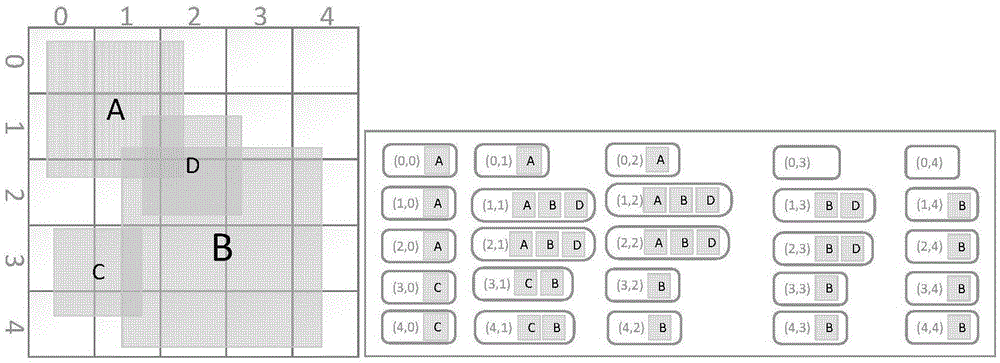Rapid building method of tile pyramid for large-scale raster data set
A tile pyramid and raster data technology, which is applied in the fields of digital data processing, structured data retrieval, geographic information database, etc., can solve the problems of less optimization research, increasing the overall time of data set visualization, long data preprocessing time, etc. problem, achieve the effect of shortening the time cycle, high efficiency, and improving data processing efficiency
- Summary
- Abstract
- Description
- Claims
- Application Information
AI Technical Summary
Problems solved by technology
Method used
Image
Examples
Embodiment Construction
[0031] The present invention will be further described in conjunction with the accompanying drawings and specific embodiments.
[0032] figure 1 It is a schematic diagram of the overall flow of the present invention. The specific process is as follows:
[0033](S1) Obtain a dataset containing image files; register the raster image dataset to be visualized with the map service platform.
[0034] (S2) traversing the image files in the data set, reading the minimum outsourcing frame of all image files, establishing a spatial index file, and storing the spatial index file in the file system;
[0035] Obtain the identifier of the dataset, that is, the id that uniquely identifies the dataset in the file system, and create a corresponding index file as the basis for Mapnik to query related image files during the tile drawing process. In this embodiment, when establishing a spatial index, an intuitive grid index method is adopted in view of the spatial distribution characteristics ...
PUM
 Login to View More
Login to View More Abstract
Description
Claims
Application Information
 Login to View More
Login to View More - R&D
- Intellectual Property
- Life Sciences
- Materials
- Tech Scout
- Unparalleled Data Quality
- Higher Quality Content
- 60% Fewer Hallucinations
Browse by: Latest US Patents, China's latest patents, Technical Efficacy Thesaurus, Application Domain, Technology Topic, Popular Technical Reports.
© 2025 PatSnap. All rights reserved.Legal|Privacy policy|Modern Slavery Act Transparency Statement|Sitemap|About US| Contact US: help@patsnap.com



